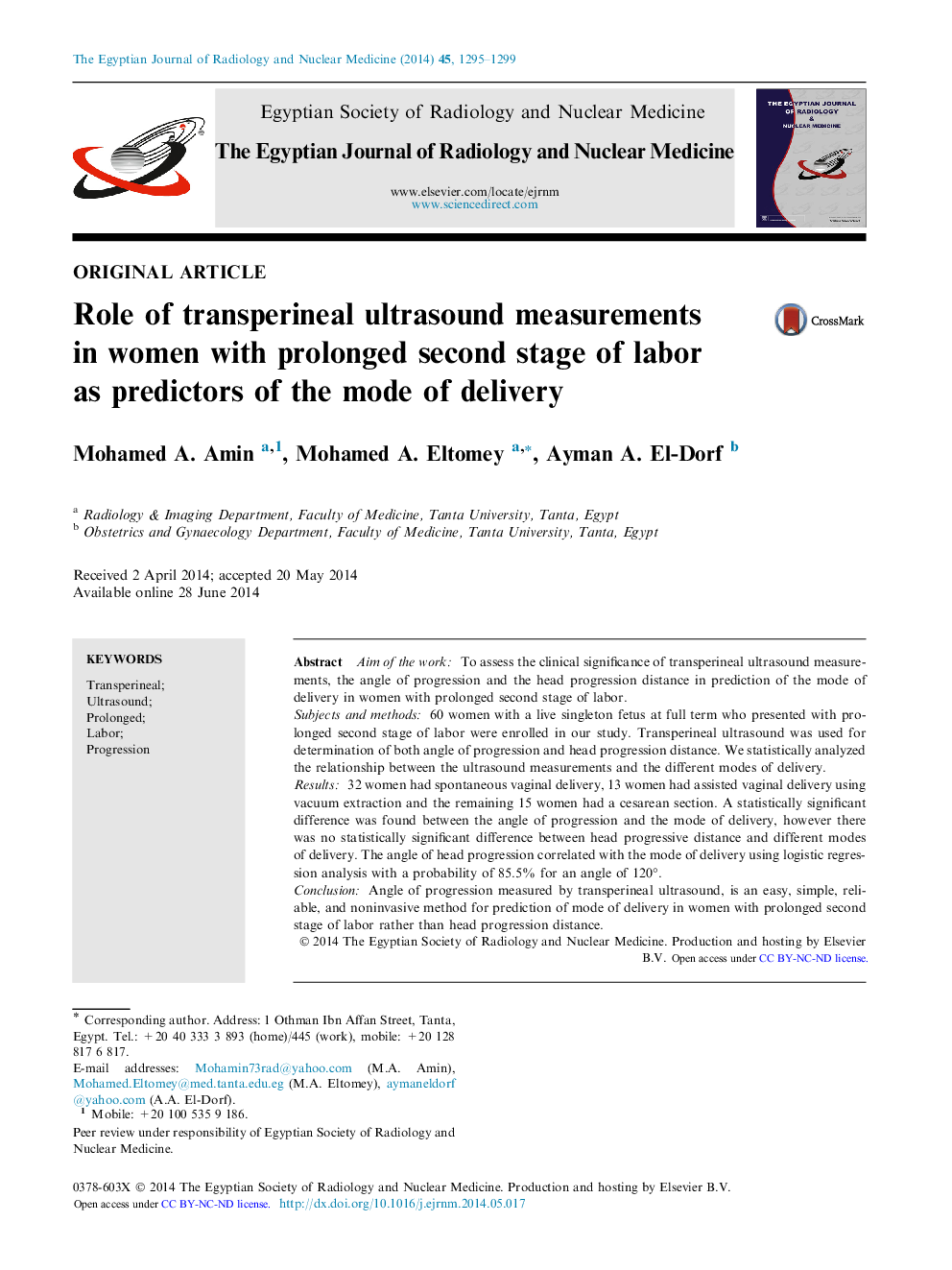| Article ID | Journal | Published Year | Pages | File Type |
|---|---|---|---|---|
| 4224324 | The Egyptian Journal of Radiology and Nuclear Medicine | 2014 | 5 Pages |
Aim of the workTo assess the clinical significance of transperineal ultrasound measurements, the angle of progression and the head progression distance in prediction of the mode of delivery in women with prolonged second stage of labor.Subjects and methods60 women with a live singleton fetus at full term who presented with prolonged second stage of labor were enrolled in our study. Transperineal ultrasound was used for determination of both angle of progression and head progression distance. We statistically analyzed the relationship between the ultrasound measurements and the different modes of delivery.Results32 women had spontaneous vaginal delivery, 13 women had assisted vaginal delivery using vacuum extraction and the remaining 15 women had a cesarean section. A statistically significant difference was found between the angle of progression and the mode of delivery, however there was no statistically significant difference between head progressive distance and different modes of delivery. The angle of head progression correlated with the mode of delivery using logistic regression analysis with a probability of 85.5% for an angle of 120°.ConclusionAngle of progression measured by transperineal ultrasound, is an easy, simple, reliable, and noninvasive method for prediction of mode of delivery in women with prolonged second stage of labor rather than head progression distance.
